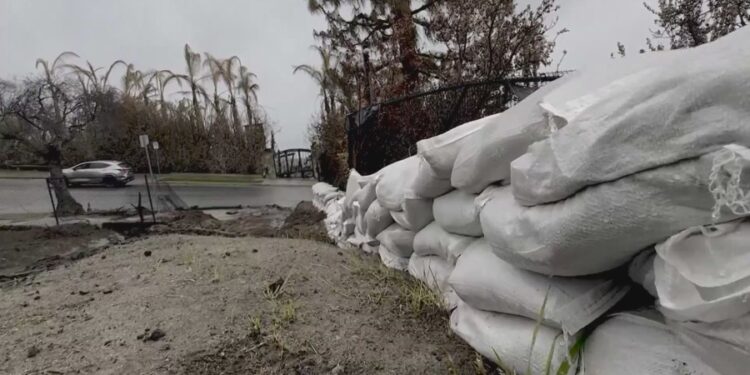As the heaviest rain storm of the winter season reached its peak on Thursday afternoon, some of Southern California’s most vulnerable areas braced for the potential impact.
Crews and officials across the region prepared for potential mudslides, especially in areas with burn scars from the recent wildfires that ravaged several areas of metropolitan Los Angeles.
According to the National Weather Service, the most prominent time for hard rainfall was expected between noon and 6 p.m. on Thursday. Rain totals as of midday Thursday can be found here.
Some evacuation orders were issued, prompting residents to leave immediately.
Evacuation areas in Los Angeles County include part of the Palisades Fire burn zone, namely parts of the Pacific Palisades and Topanga State Park, as well as the parts of Sierra Madre affected by the Eaton Fire. Officials went door-to-door on Thursday morning to affected areas, telling residents to leave. An evacuation map of L.A. County can be found here.
Sections of Orange County affected by the Airport Fire were also included in evacuation orders. They include:
- Trabuco Canyon
- Hot Springs Canyon
- Bell Canyon
- Long Canyon
- Modjeska Canyon
Minor flooding had occurred along the Sunset Fire burn scar in the Hollywood Hills, Eaton Canyon, and areas of the Inland Empire.
During a news conference Thursday, officials told residents to take evacuation orders seriously.
“Everyone needs to be at a high state of readiness,” said Dr. Ariel Cohen of the National Weather Service. “So that if you do have an evacuation warning or order issued for your area, you take those orders and warnings very seriously.”

KTLA reporters spotted crews placing barriers to capture and divert mud and debris flow in the Eaton and Palisades burn areas.
In the Pacific Palisades, KTLA’s Kimberly Cheng said officials were checking on the stability of barriers around noon as the rain intensified.
“They’re continuously checking on about more than a dozen of these debris basins to make sure that they are still doing good,” Cheng said. “So far, so good.”







